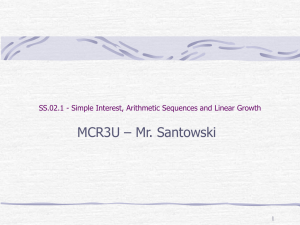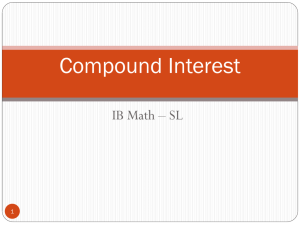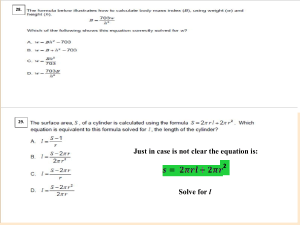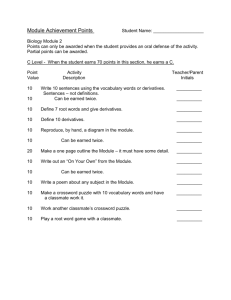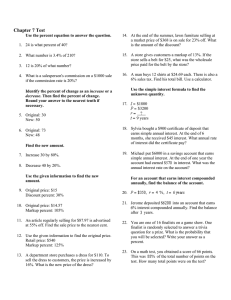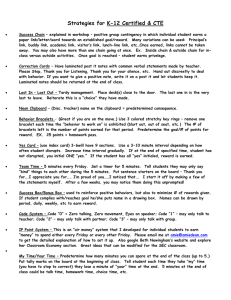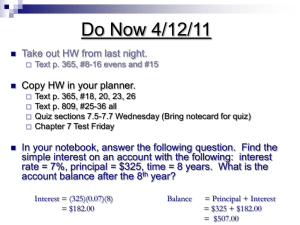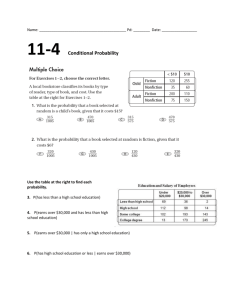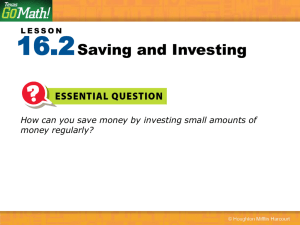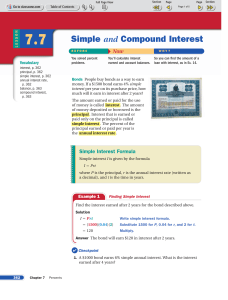Simple & Compound Interest: Lesson & Examples
advertisement
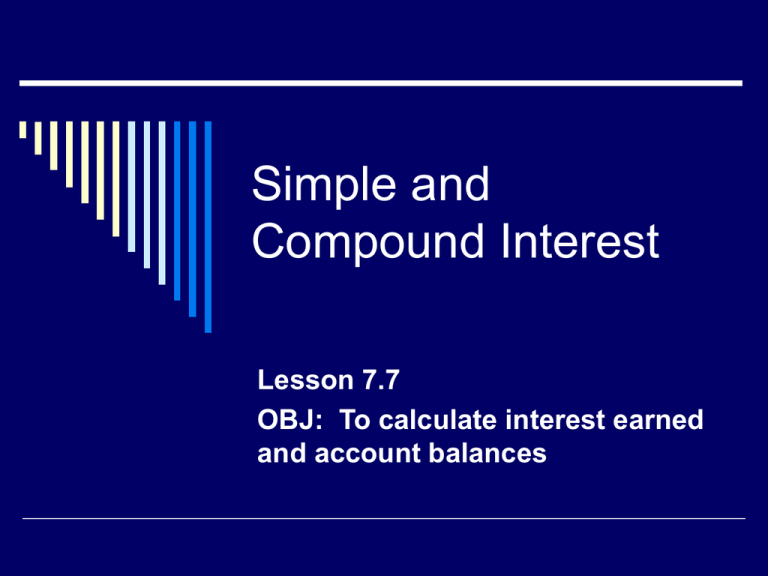
Simple and Compound Interest Lesson 7.7 OBJ: To calculate interest earned and account balances Simple Interest I = prt; where p is principal, r is the rate and t is the time in years. Interest – The amount earned or paid for the use of money. Principal – The amount of money borrowed or deposited. Simple Interest – The amount paid only on the principal Annual Interest Rate – The percent of the principal earned or paid per year. Examples 1. 2. A $1000 bond earns 6% simple annual interest. What is the interest earned after 4 years? Find the simple interest earned on $500 after 5 years in a money market account paying 5%. Balance (A) The amount of an account that earns simple interest is the sum of the interest and the principal. A = p + prt or A = p(1 + rt) You can use either formula to get the balance when calculating the balance after simple interest. Examples 1. 2. Susan deposits $2000 into her savings account. What is her balance after she earns 7% simple interest for 6 years? Find the unknown amount A=? p = $1000 r = 2.5% t = 2 years Examples A = $1424.50 p=? r = 3.5% t = 6 months Remember time must be in years!!! 3. Compound Interest The interest that is earned on both the principal and any interest that has been previously earned. Formula A = p(1 + r)t Example – You deposit $1200 into an account that earns 3.8% interst compounded annually. Find the balance after 5 years. Examples 1. 2. You deposit $1200 into an account that earns 3.8% interest compounded annually. Find the balance after 5 years. Max borrows $3500 for a new car. The loan has 6.7% interest that will be compounded annually. How much money will he owe after 36 months?
